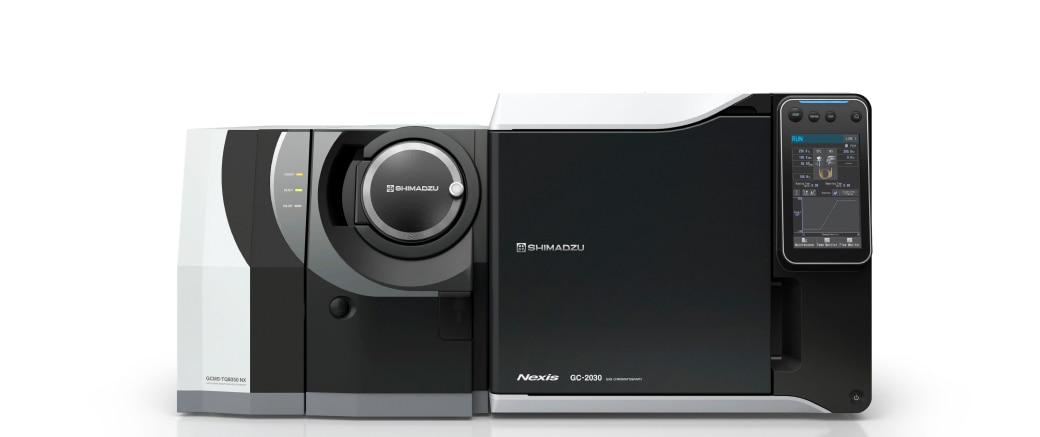Fundamentals of GCMS: Understand the Basics, Key Trends, and Latest Developments

Mass spectrometry (MS) is a highly-sensitive detection technique that forms, separates and detects ions in the gaseous phase. When coupled to a gas chromatograph, it immediately ionizes the gaseous eluted compounds, separates the ions in vacuum based on their mass-to-charge ratios (m/z) and eventually measures the intensity of each ion. These intensities are recorded to produce a series of mass spectra that displays the relative ion intensities against m/z. The eventual output of GCMS is the mass chromatogram.
A Total Ion Current Chromatogram (TIC) is a chromatogram created by summing up intensities of all mass spectral peaks belonging to the same scan. MS is one of many GC detectors but unlike other detectors, it can perform both quantitative and qualitative analyses. GCMS separates and quantifies samples with multiple chemical components and complex matrices, as well as having the capability to identify unknown compounds.
Read on for Shimadzu's overview of the fundamental principles of gas chromatography mass spectrometry and its latest advancements.
Alternatively, jump ahead now by getting a copy of our guide, where we detail all you need to know about GCMS technology.
The Importance of Gas Chromatography Mass Spectrometry (GC-MS) As A Detector
While other detectors such as FID can perform identification and quantitation just like GCMS, it is noted that unknown peaks detected by both techniques can only be further determined and identified easily using GCMS. This is because data such as the retention time, molecular weight and mass spectra obtained from GCMS can be retrieved and used for a spectral library search. With additional software, GCMS can also calculate the accurate mass and estimate the molecular composition. This is extremely valuable for the unique identification of molecules, also known as qualitative analysis.

With this information, GCMS provides added specificity and sensitivity, as well as the convenience of simultaneous multi-component analysis. This is applicable to many industries and applications today, for example, environmental, forensic, food and beverage, clinical, pharmaceutical and the chemical industries. As such, GCMS is often labeled as the accepted technique or gold standard for separation and analysis.
However, it is important to note that MS does have some limitations as compared to other techniques. For example, the volatility and thermal stability requirements for analysis using GCMS are one of its major limitations. As GC separates based on the boiling point and interaction with the column, compounds with similar chemical properties such as certain isomeric compounds (e.g. naphthalene and azulene) cannot be easily separated and distinguished by GCMS. In such cases, the separation may have to be conducted or further improved by 2D-GC or a more specialized GC column.
Mass Analyzers in GCMS and GC-MS/MS Systems
Mass spectrometers are now used for an extremely diverse range of applications. Each mass analyzer, with its own characteristics, has its pros and cons. It is crucial to understand the different principles, features and characteristics of these mass analyzers and choose the most suitable one for your analyses. Some of the key advantages and limitations of these single mass analyzers are listed in the table below. In terms of performance, simplicity, cost and ease-of-operation, quadrupole mass analyzer has been the superior choice for most applications and has been dominating the GCMS industry.
| Mass Analyzer | Description | Advantages | Limitations |
|---|---|---|---|
| Magnetic Sector | - Scanning - Continuous |
- High resolution - High dynamic range - High reproducibility - High sensitivity |
- Expensive and bulky - Slow scan speed - High vacuum required |
| Quadrupole | - Scanning - Mass Filter - Continuous |
- Compact and simple
- Relatively cheap
- Good selectivity (SIM)
- Moderate vacuum requirement
|
- Limited mass range
- Low resolution - Little qualitative information
|
| Time-of-Flight (TOF) | - Non-scanning - Pulsed |
- High sensitivity and ion transmission - High resolution - Excellent mass range - Fast scan speed |
- Requires pulsed introduction to MS - Requires fast data acquisition |
| Ion Trap Orbitrap |
- Trap - Pulsed |
- Small and compact - High sensitivity - Good resolution |
- Limited dynamic range - Limited trapping volume - Limited resolution - Requires pulse introduction to MS |
Application Areas of Gas Chromatography Mass Spectrometry (GCMS)

GCMS is generally employed for the analysis of small and volatile molecules such as light hydrocarbons and volatile organic compounds. These analyses are required in almost every industry.
- Oil, Gas and Chemical: Analysis of sulfur, inorganic gasses and light hydrocarbons
- Environmental Monitoring and Testing: Analysis of volatile environmental pollutants
- Forensic Toxicology: Steroid and drug screening and analysis
- Food and Beverage: Analysis of pesticides, additives and contaminants
- Pharmaceuticals: Impurities and residual solvent analysis
- Flavour and Fragrance: Analysis of aromatics in perfume, wine and coffee
Explore the far-reaching impacts of GCMS across diverse industries by accessing our guide here.
The Future of GCMS: Latest Trends and Developments

Extensive product research and development has been conducted to design a GCMS instrument that not only fits customers’ requirements but also delivers cutting-edge innovations. These advanced technologies, notably Shimadzu’s Ultra-Fast Mass Spectrometry (UFMSTM), are developed to enhance the performance of MS-based techniques.
There are several components to UFMS which are specially configured to generate high-sensitivity, robust results, and allow efficient use of the instrument (e.g. less downtime and reduced maintenance frequency and time).
Particularly, one major highlight of the UFMS is its MS hardware. It consists of five crucial components: (a) pre-rods, (b) off-axis ion optics, (c) UFsweeper collision cell, (d) overdrive lens and (e) a shielded detector. Shimadzu’s TQ8050 NX for example, integrates all these components to deliver unprecedented quantitative GC-MS/MS analyses of ultra-trace amounts down to the femtogram level.
To uncover everything you need to know about Shimadzu’s GCMS, download the eBook now.



